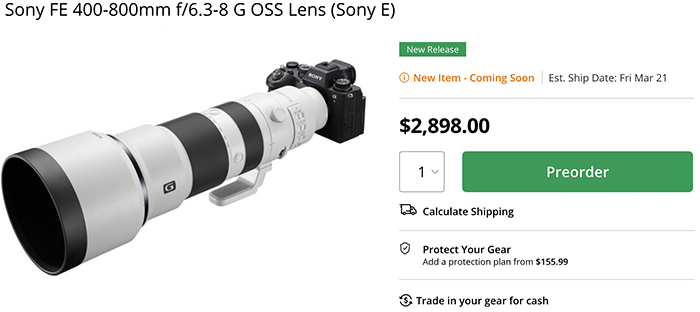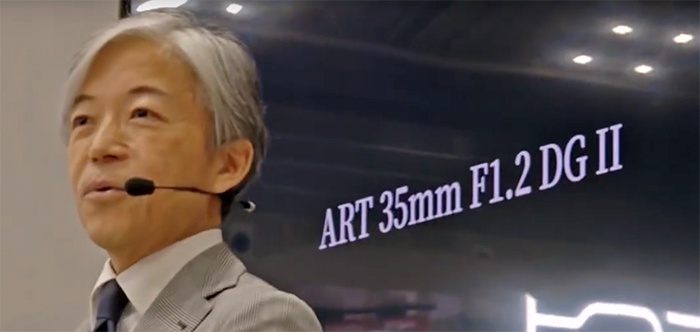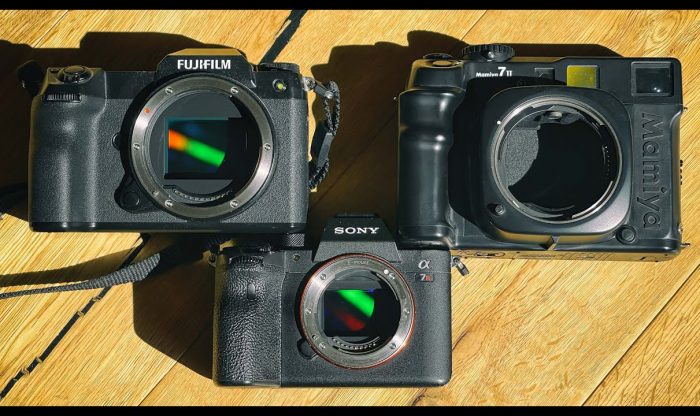Before we get started I want to thank everyone for checking out my new website! I’m happy to finally have this site up and running. I also want to welcome all to my first ever lens review! I have plans to add some more prints very soon so keep checking back if your interested. If you’ve just stumbled across my work and don’t know much about me, let me tell you a little about my story…
I’ve always had a passion for photography for as long as I can remember, although it wasn’t until around mid 2009 when I started to take it a little more seriously. Like just about everything else I do in life, I jumped in head first. After months of research I decided to buy a Canon 5D Mark II along with 4 Canon lenses, The 70-200mm f/2.8, 100mm f/2.8 macro, 50mm 1.4 and the 16-35 f/2.8. Around $10,000 later I was ready to go. I thought to myself I’d better start taking some amazing pictures to justify this purchase. My girlfriend already thought I was crazy and maybe I was.
So the question was, what do I take pictures of? I wasn’t really sure. I came across flickr and made myself an account. It was a good place to post my pictures and get feedback and it was also a great place to find inspiration. It wasn’t long before I became interested in street photography. I loved the raw gritty street images. It felt real to me, I could relate. I could use natural light, I didn’t need an assistant and I could just get out on my own and do my thing at my own pace. I fell in love with photography and I became obsessed with learning as much as I could, not only about getting the most out of my camera when taking pictures, but also learning about the editing process at home.

(Canon 5D Mark II + Zeiss Distagon T* 1,4/35 ZE) – One of my favorite places for street photography, Chinatown NYC

(Canon 5D Mark II + Zeiss Distagon T* 2/25 ZF.2) – Wide and fast this 25mm from Zeiss is a gem! Another reason why I couldn’t wait to try out the Loxia and Batis
I started to develop my style and was fascinated by the idea of creating fake movie stills. This involved creating a cinematic look with the combination of a wide angle crop and the proper tones and colors. People started to recognize my work and I started to get paid jobs as a photographer. I decided to take it a step further and learn more about shooting video. It seemed like a natural progression. The Canon 5D Mark II was the perfect camera for the job as it pretty much revolutionized the entire film industry. All of a sudden you could shoot video on a full frame sensor and get that beautiful cinematic look with a $3,000 camera, which was previously unheard of.

(Canon 5D Mark II + Makro-Planar T* 2/100mm) – I think this is a good example of the “cinematic look”
As I started to shoot video I realized the importance of using manual lenses due to their longer focus throw. This is when I first became aware of Carl Zeiss lenses. My first purchase was the Distagon T* 1,4/35 ZE. This lens quickly got me hooked. The clarity and sharpness easily surpassed any of the lenses I owned. The bokeh was so smooth and buttery, and the colors popped. The Zeiss 35mm was glued to my camera. In no time I became quick at focusing while taking stills. I got great practice taking pictures of my young son running around the house. I actually enjoyed focusing manually more then relying on autofocus. I felt it was more accurate and it made me more connected with the process of taking pictures.

(Canon 5D Mark II + Zeiss Distagon T* 1,4/35 ZE) – My son and his mom holding him up in Central Park
After having such a great experience with the Zeiss 35mm I went on to buy the Makro-Planar T* 2/100 as well as the Distagon T* 2/25. In 2015 after using my Canon 5D Mark II for six great years I decided to move on to the Sony A7RmII. The great thing about the Sony system is I could use basically any lens I own with the proper adapter. They all worked well but what I hadn’t experienced was any of the native lenses. Since Zeiss came out with the Loxia and Batis series of lenses for Sony mirrorless cameras, I knew great things were on the way. Once they announced the wide angles I was really excited because a proper wide angle is what has been missing in my lineup.

(Canon 5D Mark II + Zeiss Distagon T* 2/25 ZF.2) – One of my favorite things to take pictures of is bad weather, especially snow in the city!
So hopefully I haven’t bored you all to death! Now that we have gotten a little about me and my photographic history out of the way let’s talk about these lenses. This isn’t going to be a scientific test or comparison. I’m sure you can find that kind of thing on plenty of other sites. I only had the lenses for a short time and due to my work schedule I was able to shoot mostly at night. I didn’t have a problem with that because I’ve come to really enjoy making images at night and probably prefer to do so. I love the mood you can find in low light city images. So let’s take a look at what these lenses can do!

(Sony ILCE-7RM2 + Zeiss Loxia 21mm f/2.8) ISO 2500 – One of the first images I took with the Loxia. I took this out the window of my car while stopped at a red light.

(Sony ILCE-7RM2 + Zeiss Loxia 21mm f/2.8) ISO 2500 – A couple blocks later I caught another one! I saw that light and had to try and capture it. The Loxia did a great job.
When the two lenses from Zeiss arrived at my doorstep I couldn’t wait to get my hands on them. When I opened up the box I went for the Loxia 21mm first. It has the look and feel of a quality Leica lens. It has an excellent build and felt just the right weight and size in my hand. You can tell right away this is not a toy! I attached it to the Sony A7rii and it was a match made in heaven. The Loxia 21mm balanced perfectly on the A7rii. I would be comfortable walking around all day with this combo.

(Sony ILCE-7RM2 + Zeiss Loxia 21mm f/2.8) ISO 100 – Did a 30 second long exposure for this one, looking at Brooklyn from the South Street Seaport
When I was shooting with manual lenses on the Canon 5D Mark II it could get a little tricky. I never could get a sharp image looking through the viewfinder. What I had to do was zoom in using liveview and then zoom back out and compose the frame. Doing this while trying to catch that defining moment on the street wasn’t easy. I became quite proficient at it but needless to say there were times I missed the shot I wanted. It wasn’t the most comfortable way to shoot either but the results I got with the Zeiss lenses were worth it.

(Sony ILCE-7RM2 + Zeiss Loxia 21mm f/2.8) ISO 2000 – Love this wide angle look of Essex Street late night in the city that never sleeps!
This was a big reason for me to switch over to the Sony A7Rii. I could now zoom into the image while using the EVF. With the Loxia lenses being specifically designed for the Sony system this takes the process a step further. Once you look into the EVF and move the focus ring the camera automatically zooms into the image allowing you to easily achieve critical focus. This saves time and adds convenience which really makes using this lens a pleasure.

(Sony ILCE-7RM2 + Zeiss Loxia 21mm f/2.8) ISO 3200 – South Street Seaport, I love the minimality and the fact that there is no human element in this one.
The Zeiss Loxia 21mm is an excellent lens. I would buy it and in fact I think I’ll be adding it to my collection very soon. I can’t honestly think of anything negative to say about it. Great build, perfect size and the weight feels substantial without being too heavy. It balances perfectly on the Sony A7rii body and the focus is buttery smooth. It produces sharp images corner to corner and the colors pop! What more do you want? I wish it was a little faster maybe but of course we know that would add weight and size. If I need a more shallow depth of field I’ll put my 35mm 1.4 on the camera.

(Sony ILCE-7RM2 + Zeiss Loxia 21mm f/2.8) ISO 2500 – Great details and colors out of the Loxia 21mm
At some point I decided it would be a good idea to take both lenses out at the same time so I could show the difference between 18mm and 21mm. So below is that comparison, just to give you an idea of what the field of view looks like with each lens. Again this isn’t a scientific test. I didn’t have the camera on a tripod, I just stood in the same spot and took the shot handheld. All the images in this review have been processed. I don’t see the point in posting out of camera images without editing. I wouldn’t normally put out an image that I didn’t correct on some level so I don’t find that interesting. I usually do some quick coloring in lightroom and some polishing in photoshop. I probably didn’t spend more then 5 minutes on most of these…

(Sony ILCE-7RM2 + Zeiss Loxia 21mm f/2.8) ISO 2500

(Sony ILCE-7RM2 + Zeiss Batis 18mm f/2.8) ISO 2500
The Batis is slightly bigger and thicker then the Loxia, I’m sure this is due to the wider angle and the autofocus elements inside the lens. Surprisingly when I picked it up it was actually lighter then the Loxia! I would have certainly expected the opposite. It’s been a while since I’ve used a lens with autofocus and I was excited to get out and give it a spin!

(Sony ILCE-7RM2 + Zeiss Batis 18mm f/2.8) ISO 100 – A view of Coney Island at 18mm from the top of the Wonder Wheel
The A7Rii and Batis worked well together. Focusing was quick and accurate. At 18mm you can expect to see some distortion, which I did. I’m using the most current versions of Lightroom and Photoshop and they both easily correct any distortion in seconds. Again the colors and details were impressive when I pulled up the images on my home computer to start editing. I have to admit it was nice to have autofocus! I found myself clicking away care free and catching some great shots.

(Sony ILCE-7RM2 + Zeiss Batis 18mm f/2.8) ISO 2500 – Late night look at the famous Junior’s restaurant in Brooklyn.
So, being in the market for a wide angle lens to put on my Sony, it would be a tough decision between the Loxia 21mm and the Batis 18mm. It all depends on what you’re looking for in a wide angle lens. If you’re shooting video and stills the Loxia is the obvious choice. If you’re strictly into still photography you would probably go for the Batis. In my opinion 21mm is slightly more usable in everyday situations. I actually like it for portraits. On the other hand if you are looking for a true ultra-wide angle, 18mm is for you. If money is not a problem, get them both!

(Sony ILCE-7RM2 + Zeiss Batis 18mm f/2.8) ISO 2500 – I was hanging out the side of the car again, thought this was a cool one I caught on the west side highway late night.
Even in low light situations the Batis didn’t have any trouble finding focus. There was no hunting going on between the camera and lens. The filter thread for the Batis is 77mm and I happened to have a 77mm ND110 so I gave it a try. I liked the results and again I wish I had more time to try more long exposures.

In conclusion, Zeiss does it again. They made two great new wide angles for the Sony system. I would be more than happy owning either one. I will probably get the Loxia just because it reminded me how much I love manual focus. Using the Sony is especially enjoyable when your using a lens that is made specifically for it!. I also shoot a lot of video so this choice makes more sense for me. I would say that the Zeiss Loxia lenses and the Sony A7Rii combine to offer the best manual focusing that digital photography has seen to date. The Batis fills the gap in Sony’s offerings for the mirrorless system. Photographers now have that ultra wide angle they have been waiting for. So with these two new lenses there is something for everyone!

(Sony ILCE-7RM2 + Zeiss Batis 18mm f/2.8) ISO 2500 – You probably wouldn’t be buying this lens for the bokeh, but it looks great for such a wide angle lens.

Thank you for checking out my review, I look forward to hearing your questions and comments and I hope to get my hands on more new gear to test out soon. Many thanks to Zeiss for loaning me the lenses!

(Sony ILCE-7RM2 + Zeiss Batis 18mm f/2.8) ISO 100 – It was hot! A quick snap of my son getting some water, I was impressed with the details when viewing this shot at home.
–
Text and Images originally posted on andrew-mohrer.squarespace.com and used with permission on SAR.



